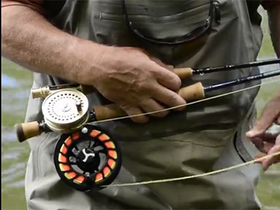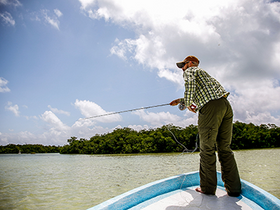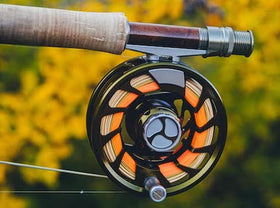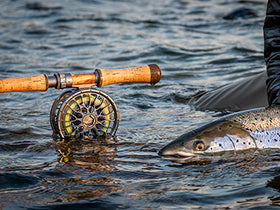
I’ve gotta admit—when I first read David Anderson’s piece “The Kiss of Winter,” it got me a little riled up. After all, we paid him for the article, and there he was recommending some gear you can’t even buy in Australia—let alone from us. At first glance, it didn’t feel like a great fit.
But once I took a breath, had a proper read, and remembered that David’s as honest and independent as they come, I realised he was just doing what he always does: calling it how he sees it. And to be fair, he made some great points.
That said, a couple of his recommendations don’t quite line up with what the manufacturers suggest when it comes to technical layering.
I’m not here to say there’s only one way to do things. There’s definitely more than one way to stay warm and dry. What works for David will no doubt work for plenty of others too. But for those curious about how these garments are actually designed to perform, here’s what’s worked for me—and what we stand behind at The Flyfisher.
The Basics of Layering
Layering can be broken into three key parts:
-
Base Layer
-
Mid Layer
-
Shell
Shells can be either jackets, or waders. If both your base and mid layers are breathable, you’ll stay dry and comfortable no matter the conditions.
Don’t Dismiss Synthetics
Modern synthetics cop a bit of a bad rap, but there are some solid options out there—especially in fleece and thermal (base) layers. In Australia, we just call them thermals. They’re affordable, easy to wash, and warm as hell.
Plenty of jackets and jumpers (or sweaters, if you’re American) pull double duty as both a shell and a mid layer. Softshell's and puffers are a great example—they’re warm, lightweight, and packable. The downside? They’re not super breathable, so best not to throw a waterproof shell over the top.
What to Avoid
The worst thing you can wear under a shell—be it waders or a rain jacket—is cotton. That includes jeans and t-shirts. Leave them in the car for the post-fish pub stop. Cotton holds moisture, offers zero insulation when wet, and has no place in a technical layering system.
Why Merino Wool is King
If there’s a holy grail of base and mid-layer fabrics, it’s merino wool. Here’s why:
-
Moisture Management: Absorbs up to 30% of its weight in moisture while still feeling dry. It draws sweat away from your skin, keeping you comfortable.
-
Breathability: Allows vapour to escape, helping you avoid that sticky, clammy feeling.
-
Insulation When Wet: Stays warm even when damp—unlike synthetics or cotton.
-
Temperature Regulation: Tiny air pockets in the fibre insulate when it’s cold and breathe when it’s warm.
-
Odour Resistance: Natural lanolin fights bacteria, so you can wear it for days without stinking.
-
Softness and Stretch: Fine fibres make it comfy against your skin and easy to move in.
Merino’s not cheap, which is why you see more synthetics these days—but brands like Skwala aren't afraid to use the best materials they can get their hands on, no matter the cost. For them, performance isn’t something they’ll compromise on, and they’re doing a brilliant job keeping wool alive in technical layering.
The Truth About Shells
Good shells—like your waders or rain jackets—are marketed as breathable, but let’s not kid ourselves. Compared to what you (hopefully) have on underneath, they’re nowhere near as breathable. That’s why it's crucial to manage moisture from the inside out and let that high-tech shell do its job.
Just to be technical for a sec—breathability is about letting moisture vapour (not just air) escape. It’s measured by things like MVTR (Moisture Vapour Transmission Rate), which is vital for comfort during active use like hiking or flyfishing. Many waterproof-breathable fabrics, like Gore-Tex, are engineered to let vapour escape on a microscopic level—but they’re no match for the breathability of a solid base and mid-layer.
Final Word
So, to wrap it up: if you want to stay warm, dry, and comfortable on the water, focus on the layers under your shell. Build a system with purpose—start with a proper base, add an insulating mid layer, and finish with a shell that keeps the worst of the weather out.
And whatever you do—leave the cotton at home.
























